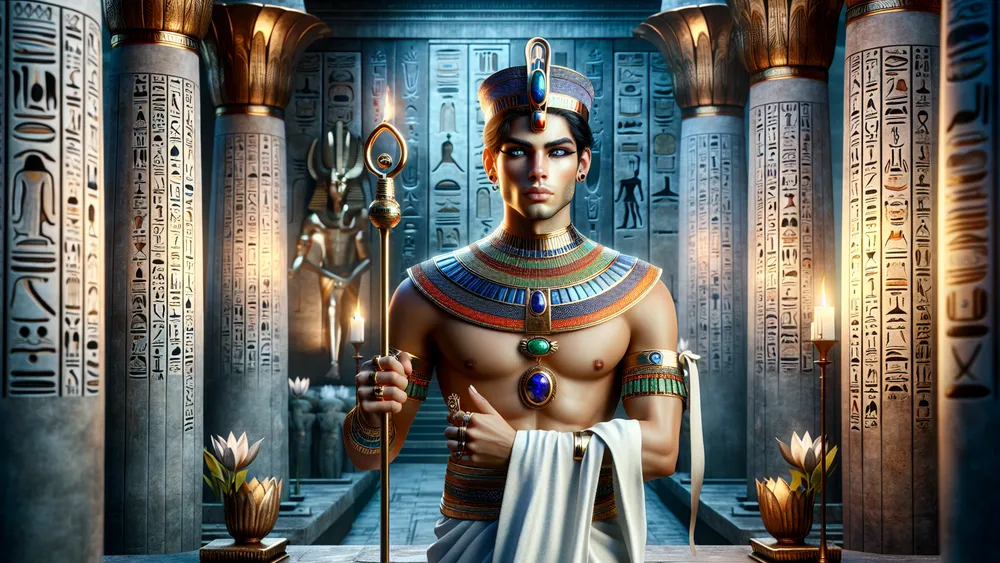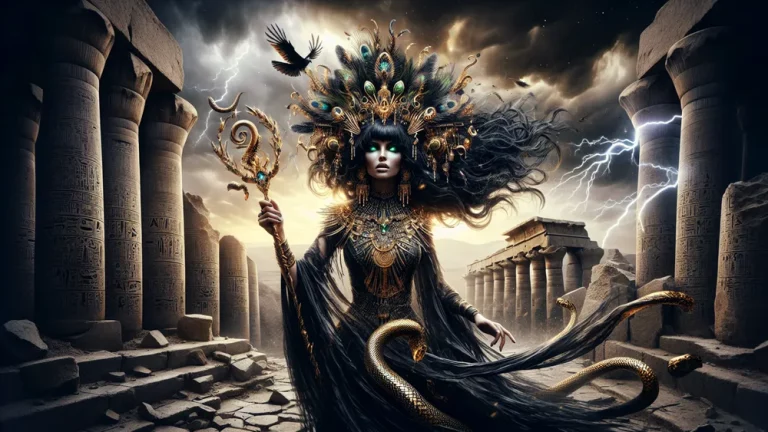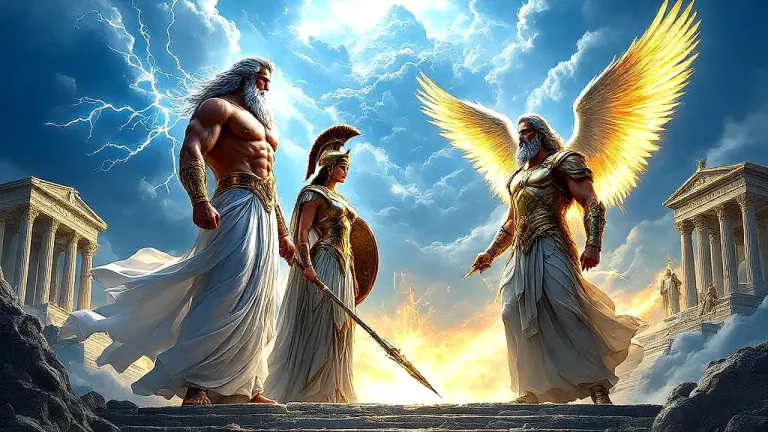Ancient Egyptian Ren: The Name Of The Soul
Hello to our look into the old Egyptian idea of Ren, which is also called the “name of the soul.” In the old days of Egypt, names had a big power and meant a lot, like how we see our identities now. Think if your name was not just a tag but a significant part of who you are, affecting your future in both life and afterlife.
Key Points:
- Ren in ancient Egypt was the name of the soul, representing one’s true self.
- Knowing someone’s Ren was thought to give power over them in ancient Egyptian culture.
- Ren played a crucial role in the afterlife, with ceremonies and rituals aimed at preserving it for eternity.
- Ancient Egyptians inscribed Ren in carvings and hieroglyphs to keep it alive.
- The ancient Egyptian soul consisted of nine parts, with Ren being one of them.
- Priests and scribes had the responsibility of safeguardng Ren through rituals and accurate recordings.
- Ren has made its way into modern media, appearing in movies, books, and TV, keeping the ancient idea alive.
This blog will go into the interesting world of Ren, showing why it’s important, what it does in the afterlife, plus how people kept it safe through rituals and carvings. We will also compare Ren with other parts of the ancient Egyptian soul and see how this idea shows up in today’s media.
By the finish of this trip, you’ll know better how the old Egyptians saw the soul and what they did to keep and respect it. So, let’s start this trip to find out the secrets of Ren and its lasting impact.
Ren: Overview and Key Facts
| Key Point | Description |
|---|---|
| What Ren Means | Ren is the old Egyptian word for the name of the soul, showing someone’s real self. |
| Why It Matters | In old Egyptian times, knowing someone’s Ren was thought to give power over them, making it very important. |
| What It Does After Death | Ren was believed to be important after death, ceremonies and actions kept it safe so a person could live forever. |
| Shown in Writings | Ren was often shown in old writings and carvings, showing how important it was in ancient stuff. |
| Link to Living Forever | Keeping Ren safe was tied to living forever since people thought a well-kept Ren meant the person would keep on in the afterlife. |
| Ways of Protecting | Different spells and actions were used to keep one’s Ren safe, showing its big role in old Egyptian religion. |
| Seen Today | Ren is still talked about now in movies, books, and TV shows which often look into its magic and cultural meaning. |
| Recent Findings | New research has given us more details on Ren, helping us know more about ancient Egyptian ways and beliefs. |
Getting to Know Ren in Ancient Egyptian Culture
To really understand why Ren mattered, we need to look closer at what it was and what it did in ancient Egyptian culture. Let’s look into what Ren is and why it was so important to the Egyptians.
What is Ren and Why it Matters
In old Egyptian culture, “Ren” means the real name of a person, showing who they really are. Much like how we think of our names as key to who we are, the Egyptians believed that one’s Ren was a key part of being. This idea was so big that knowing someone’s Ren was thought to give power over them, as it was believed to hold the key to their real self. Imagine if knowing your friend’s full name gave you the power to control their fate. The importance of Ren is shown in these points:
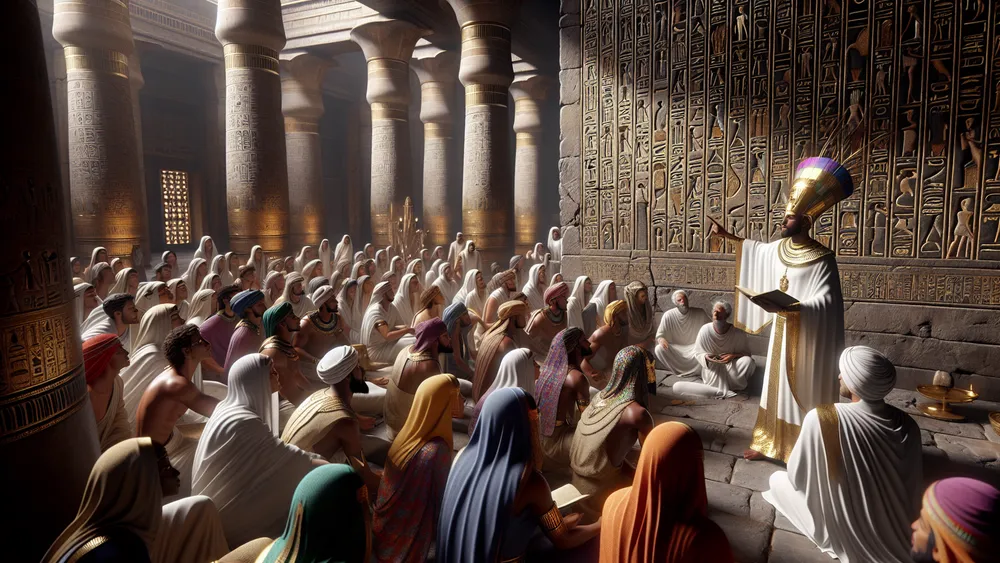
- Real Self: Ren showed the true name and self of a person.
- Big Deal in Culture: It was an essential part of being both in life and after death.
- Power Over Others: Knowing someone’s Ren was thought to give control over that person.
By knowing about Ren, we see how the old Egyptians viewed identity and the big deal they made about names.
The significance of Ren in old Egyptian culture was immense, as it represented a person’s true identity and was even thought to grant power over them.
Ren’s Role in the Afterlife
In old Egyptian belief, Ren was super important for the afterlife, acting like a key to living forever. The Egyptians thought that for someone to live forever, their Ren had to be kept safe and remembered. They did this through many different ceremonies and acts, like putting the Ren on tomb walls and stuff used in burials to make sure it wouldn’t be forgotten.
The link between Ren and living forever was strong; a well-kept Ren meant that a person’s self would last forever, letting them continue in the afterlife. Imagine how we keep loved ones’ memories alive through pictures and stories to make sure they aren’t forgotten. The importance of Ren in the afterlife can be shown in these points:
- Big Role: Ren was needed for the dead person’s ongoing life after death.
- Keeping It Safe: They used rituals and writing to save one’s Ren after death.
- Living Forever Link: A well-kept Ren was believed to make sure the person’s life went on forever.
By knowing these acts, we see how the old Egyptians felt deep beliefs about life, death, and the afterlife.
Ren in Ancient Writing
In ancient Egyptian writing, Ren often showed up in hieroglyphs and carvings, being a very important part of keeping someone’s name alive. These symbols were carefully cut into tomb walls, stone structures, and burial stuff to make sure the Ren stayed remembered forever. One famous case is the carvings in the tomb of Pharaoh Tutankhamun, where his Ren is clear to protect his name in the next world.
Another example is the Rosetta Stone, which, although mainly known for helping us read Egyptian writings, also has names of rulers, showing how Ren was important. These carvings matter because they help us understand how the old Egyptians saw names as a big deal. Think of these carvings like the name signs on gravestones today, making sure the person’s name is not lost. These are some important carvings mentioning Ren:
| Example | Description |
|---|---|
| Tomb of Tutankhamun | Carvings clearly show the Pharaoh’s Ren to keep his name protected in the afterlife. |
| Rosetta Stone | Talks about names of rulers, showing the importance of Ren in old writings. |
| Pyramid Texts | Early religious carvings in pyramids that have the Ren of the dead to keep them alive forever. |
By looking at these carvings, we can see old Egyptians’ deep respect for names and their belief in the power of Ren.
The Different Parts of the Ancient Egyptian Soul
Now that we have talked about Ren and why it matters, let’s look at all the other parts that make up the old Egyptian idea of the soul.
A Quick Look at the Nine Parts of the Soul
In old Egyptian beliefs, the soul had nine different parts, each part having its own job and importance. These parts are:
- Ren: The real name, which shows who the person is and makes sure they live forever.
- Ba: The personality, shown as a bird with a human head that could go back and forth between the world of the living and the afterlife.
- Ka: The vital force or life energy, often seen as a double of the person.
- Ib: The heart, seen as the place for emotion, thought, and intention.
- Sheut: The shadow, which was thought to have part of the person’s energy.
- Akh: The changed spirit, made possible through right burial and rituals, letting the dead live with the gods.
- Sahu: The spirit body that came out after death and the right rituals.
- Khat: The body itself, which had to be kept intact through mummification.
- Sekhem: The form or power of a person, often linked with their strength and energy.
These parts were deeply linked, each playing an important role in the person’s life and after death. For example, the Ka needed the Khat (physical body) to be kept intact through mummification to go on living, while the Ba needed the Ren to be remembered to move about freely.
Think of these parts as different parts of a person’s being, similar to how we now think of mind, body, and spirit. By learning about these parts, we get a full view of how the old Egyptians thought about the soul and its journey after death.
Comparing Ren with Other Soul Parts
When we compare Ren with other parts of the old Egyptian soul, like Ba, Ka, and Ib, there are clear differences and special jobs. Ren, the real name, is about identity and being remembered, making sure the person is thought of and can live forever.
But, in contrast, Ba stands for personality and is shown as a bird with a human head, to symbolize its ability to move between the living world and the afterlife. Ka, which is different, is the life energy or vital part, often seen as a double of the person, which needed the physical body (Khat) to stay whole for it to keep on existing.
Ib, the heart, was the place for emotion, thought, and intention, with a vital role in the judgment of the soul after death. To make it simple, think of Ren as your name and who you are, Ba as your special personality, Ka as your life energy, and Ib as your emotions and moral center.
Each part had its purpose, but Ren was special in its job of making sure the person’s name was kept and not forgotten, which was key for living forever in the afterlife. This connection of parts shows the complexity of how the old Egyptians saw the soul and its path after death.
Keeping Ren Safe and Sound
Now that we know the special part of Ren in the soul, let’s see how the old Egyptians tried hard to keep it and save it.
Spells and Rituals to Protect Ren
In old Egyptian religion, keeping one’s Ren safe was very important, and they did this with many spells and rituals. These practices included saying special words from the “Book of the Dead,” which they believed would keep the Ren safe from bad forces and make sure it was remembered; plus, names were written on tomb walls, statues, and amulets to keep them lasting.
Though it might sound strange, think of these rituals as old ways to keep one’s identity safe, kind of like how we use passwords and security systems today to keep our personal information safe. The point of these practices was to make sure the person’s name, and their identity, would last forever, letting them live forever in the afterlife.

By carefully doing these rituals, the old Egyptians believed they could keep the core of who they were safe, making sure they kept existing and being remembered in the world beyond.
Keeping one’s identity safe for eternity through ancient Egyptian rituals parallels modern practices like using passwords for online security.
The Work of Priests and Scribes
Priests and scribes had a very important job in old Egyptian society, especially in keeping Ren safe. These knowledgeable people had the job of making sure that the real names of people were written down and said correctly, which was a key part of keeping one’s identity and living forever. Priests would often say the names during rituals and ceremonies. However, scribes would carefully write them on tombs, monuments, and amulets.
Think of what they did as being like what modern-day record keepers and archivists do to make sure important information is written down and saved for future generations. By keeping the right way to say and write Ren, priests and scribes made sure that the person’s identity would be remembered and kept safe, so they would have a place in the afterlife.
This careful attention to details was necessary in the old Egyptian belief system, where keeping one’s name safe was the same as keeping one’s soul safe.
Ren in Today’s World
Now that we have looked at the old ways around Ren, let’s see how this idea is shown and seen in today’s times.
Ren in Movies, Books, and TV
Ren, the old Egyptian idea of the real name, has shown up in modern media, being in movies, books, TV shows. For example, in the book series “The Kane Chronicles” by Rick Riordan, Ren is shown as a strong part of magic, showing how important it is in controlling and knowing one’s identity. Movies like “The Mummy” series also talk about the importance of names and their magic power.
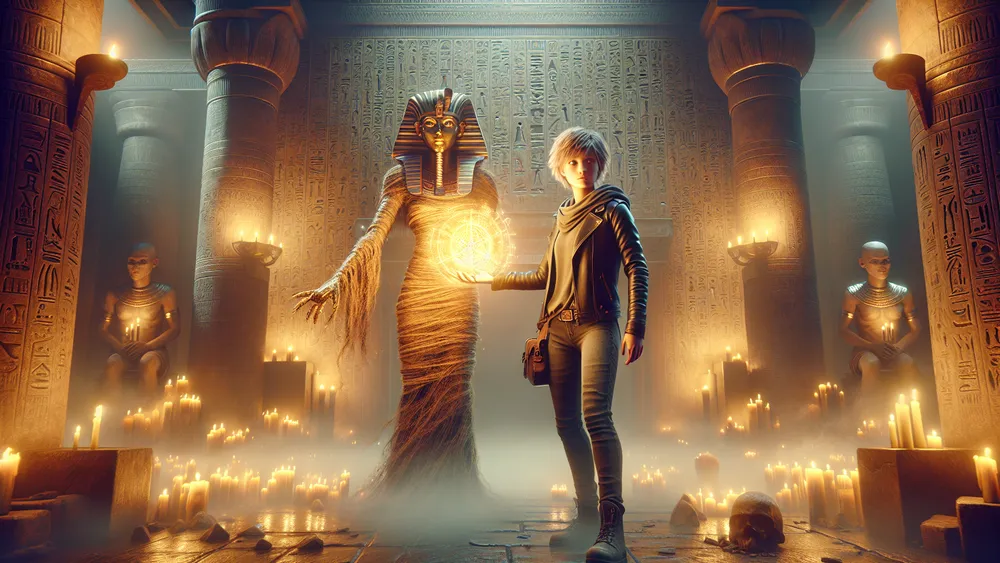
These shows, even if they are made more exciting for fun, help bring the Ren idea to more people. Their accuracy can differ, sometimes making the idea too simple or overly exciting. But, even then, they are very important in making people curious about old Egyptian beliefs, making the idea of Ren easier to understand and more interesting to everyone.
By showing Ren in a clear and fascinating way, modern media makes sure this old idea stays alive today.
What Scholars are Finding Out About Ren
Recent looks by academics have shown new details about the idea of Ren, bringing interesting information about old Egyptian beliefs. For instance, they have found writings and texts that give more understanding of how Ren became a part of daily life and religious practices.
One look, for example, checked tomb writings to show the careful work put into keeping the Ren, showing how important it was for living forever. These finds are like finding new parts in a history book, giving new views on how the old Egyptians saw identity and the afterlife.
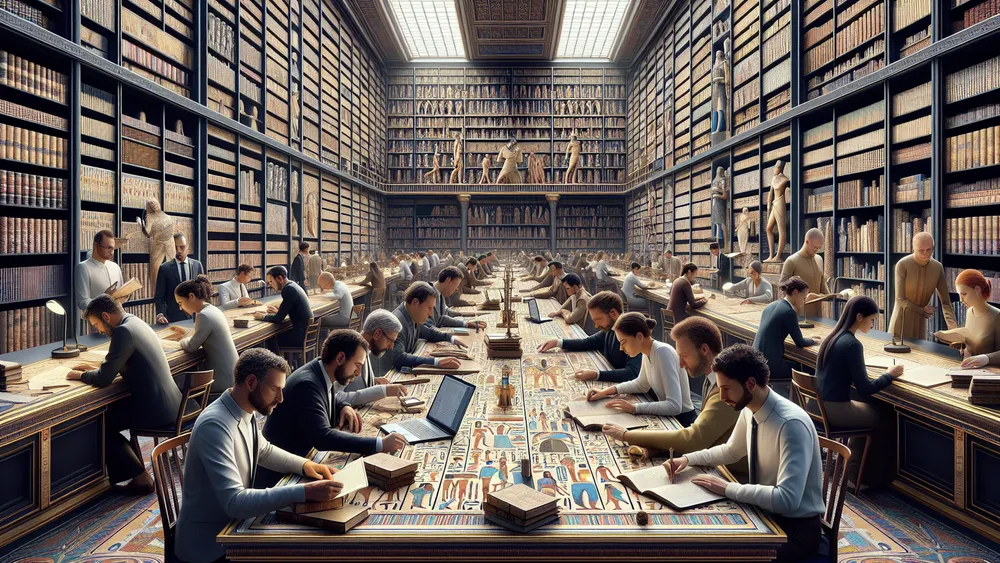
With these new finds, scholars can put together a fuller picture of the role Ren had in old Egyptian culture, increasing our respect for their complex beliefs. This ongoing look keeps adding to our knowledge, showing that the study of Ren is far from done and still has a lot of unknowns waiting to be found.
FAQs
1. What is the significance of knowing one’s Ren in ancient Egyptian culture?
The significance of knowing one’s Ren in ancient Egyptian culture lies in the belief that it grants power over that individual and ensures their identity and existence in the afterlife.
2. How did ancient Egyptians ensure the preservation of Ren after death?
To ensure the preservation of Ren after death, ancient Egyptians performed specific rituals and inscribed the deceased’s name on tombs and monuments.
3. What are some famous inscriptions that mention Ren?
Some famous inscriptions that mention Ren include the Pyramid Texts and the Coffin Texts, which highlight its importance in the afterlife.
4. How is Ren different from other components of the soul?
Ren is different from other components of the soul because it specifically represents the true name and identity of an individual, which is believed to hold power over that person.

